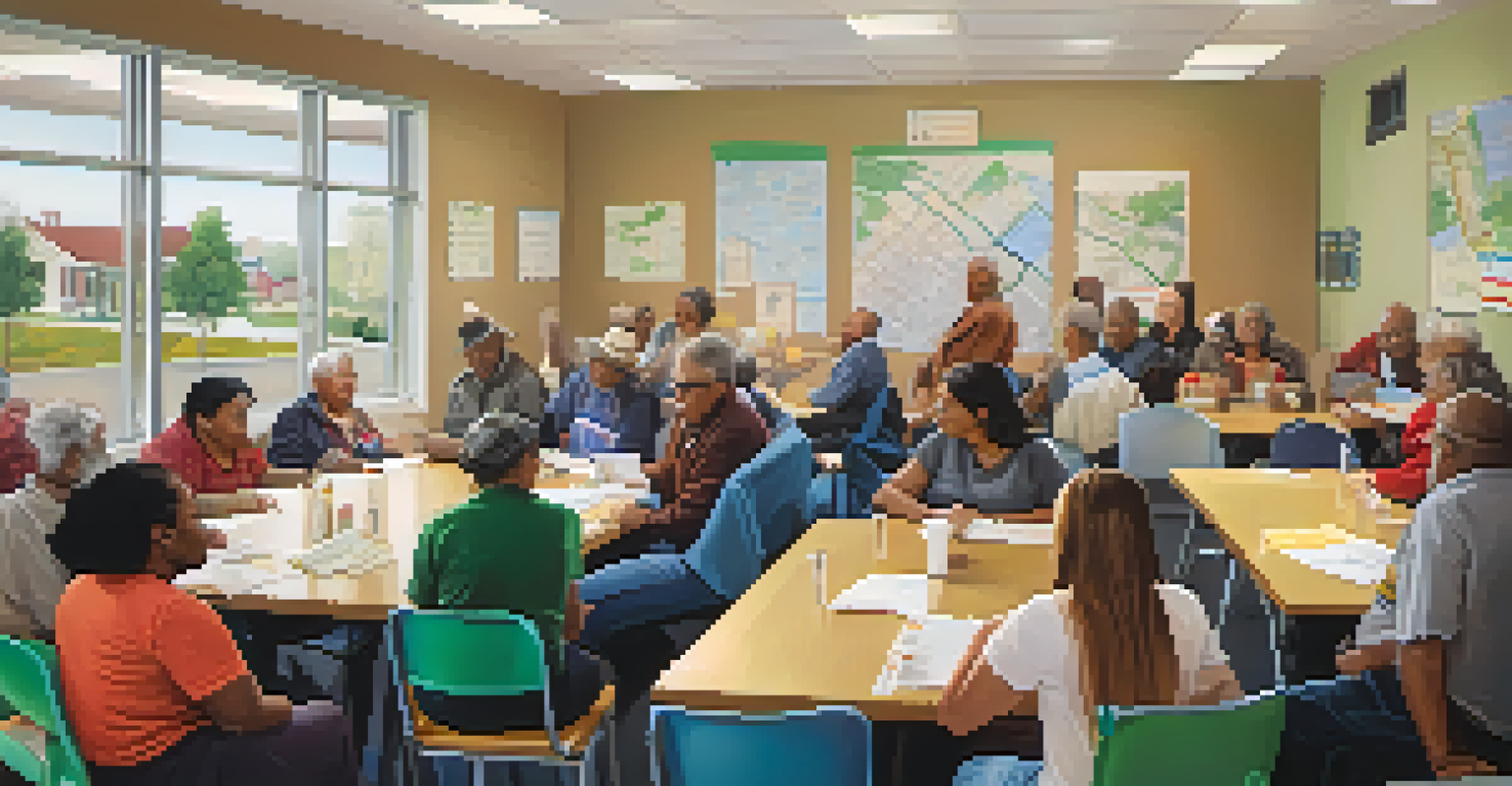Understanding Transportation Equity: A NYC Perspective

Defining Transportation Equity in New York City
Transportation equity refers to the fair distribution of transportation resources and services among all communities. In New York City, this means ensuring that everyone, regardless of their socioeconomic status, has access to reliable public transit. It's not just about physical access; it's about affordability, safety, and convenience.
Transportation is a fundamental right that impacts various aspects of urban life, from health outcomes to economic opportunities.
For many New Yorkers, especially those in underserved neighborhoods, public transit is a lifeline. It connects people to jobs, education, and essential services. When transportation systems fail to meet the needs of these communities, they face significant barriers to economic mobility and social equity.
Understanding transportation equity requires examining how policies and infrastructure can reinforce or dismantle existing inequalities. It's essential to recognize that transportation is a fundamental right that impacts various aspects of urban life, from health outcomes to economic opportunities.
Current Transportation Landscape in NYC
New York City's transportation system is one of the most complex in the world. With a vast network of subways, buses, and ferries, it serves millions of passengers daily. However, this intricate web often fails to adequately serve all neighborhoods, particularly those in lower-income areas.

In some communities, public transit options are limited, leading to longer travel times and higher commuting costs. This can disproportionately affect residents who rely on these services for daily activities, further exacerbating economic inequalities. Additionally, aging infrastructure can lead to service disruptions and safety concerns.
Transportation Equity is Essential
Fair access to public transit is crucial for economic mobility and overall well-being in New York City.
As NYC grapples with these challenges, it's crucial to analyze how transportation infrastructure can evolve to better serve all residents. This includes investing in upgrades, expanding service areas, and ensuring that new developments prioritize equitable access.
Barriers to Transportation Equity
Several barriers hinder transportation equity in New York City, starting with systemic issues like racial and economic segregation. Many neighborhoods with high concentrations of low-income residents lack adequate public transit options, making it difficult for individuals to access jobs and services.
Advocacy plays a pivotal role in shaping transportation equity in New York City.
Another significant barrier is affordability. The cost of public transportation can be prohibitive for low-income families, forcing them to make tough choices between transportation and other essential expenses. This financial strain can limit their mobility and opportunities for advancement.
Additionally, safety concerns can deter people from using public transit. Issues such as crime, harassment, and poorly maintained facilities can create a hostile environment that discourages ridership, further isolating vulnerable communities. Addressing these barriers is vital for fostering true transportation equity.
Community Voices in Transportation Planning
Incorporating community voices into transportation planning is essential for creating equitable systems. Engaging residents in discussions about their needs and preferences can lead to more effective solutions that address the unique challenges faced by different neighborhoods. This grassroots approach fosters a sense of ownership and accountability.
Moreover, community engagement can help identify specific barriers that might not be immediately apparent to planners and policymakers. For example, residents may have insights into the best routes for new bus lines or the timing of services that would best serve their needs. This localized knowledge is invaluable.
Barriers Limit Access for Many
Systemic issues, affordability, and safety concerns create significant hurdles for low-income communities in accessing transportation.
Ultimately, prioritizing community input can lead to more inclusive transportation policies. When residents feel heard and valued, they are more likely to support initiatives that enhance their mobility and quality of life.
Innovative Solutions for Equity
As New York City seeks to improve transportation equity, innovative solutions are emerging. Programs like discounted fare initiatives for low-income riders can alleviate financial burdens and increase access. These programs not only support individual mobility but also foster economic growth by connecting residents to job opportunities.
Another promising approach is the expansion of bike-sharing programs and pedestrian-friendly infrastructure. Creating safe walking and biking environments can empower residents to choose sustainable transportation options. This not only benefits individuals but also contributes to a healthier environment.
Lastly, leveraging technology can enhance transit equity. Mobile apps that provide real-time information and route planning can help riders navigate the system more effectively. By making public transit more user-friendly, cities can encourage greater ridership and inclusivity.
Policy Changes for Improved Access
Policy changes play a critical role in advancing transportation equity in NYC. Advocates are pushing for initiatives that prioritize funding for transit services in underserved areas, ensuring that these communities receive the resources they need. This shift in focus can lead to more equitable access for all residents.
Additionally, integrating land-use planning with transportation planning is vital. By aligning housing development with transit access, cities can create more walkable neighborhoods that promote sustainable living. This holistic approach can help mitigate the disparities that currently exist.
Community Input Shapes Solutions
Engaging residents in transportation planning fosters effective and inclusive solutions that meet the unique needs of different neighborhoods.
Moreover, implementing policies that protect vulnerable populations during transit improvements is essential. Ensuring that low-income residents are not displaced by gentrification or infrastructure projects is a key aspect of building a just transportation system.
The Role of Advocacy in Transportation Equity
Advocacy plays a pivotal role in shaping transportation equity in New York City. Organizations and community groups work tirelessly to raise awareness about the disparities in the transit system and push for structural changes. Their efforts highlight the importance of equitable transportation policies and hold decision-makers accountable.
These advocacy efforts often involve grassroots campaigns, public demonstrations, and collaboration with local government. By mobilizing community members, advocates can amplify their voices and influence policy changes that prioritize equity. This collective action fosters a sense of unity and shared purpose.

As the conversation around transportation equity continues to grow, the role of advocacy remains crucial. Engaging more residents in these discussions ensures that diverse perspectives are included in the decision-making process, ultimately leading to a more equitable transportation future for all New Yorkers.